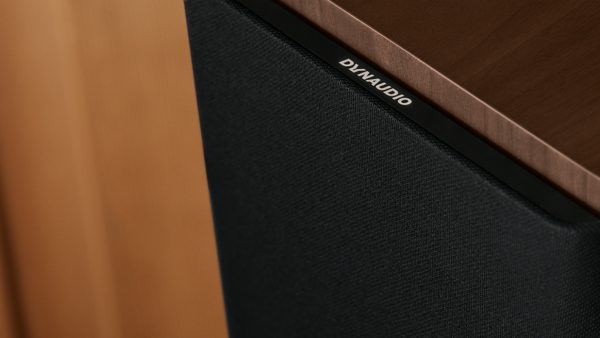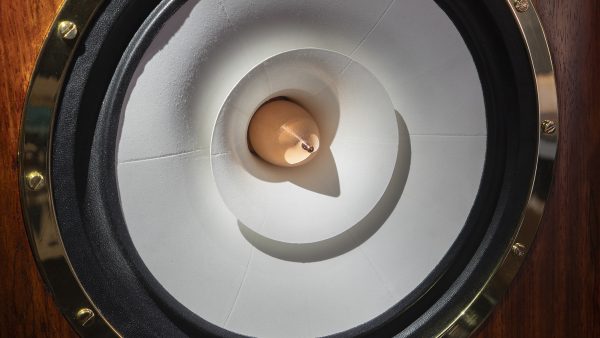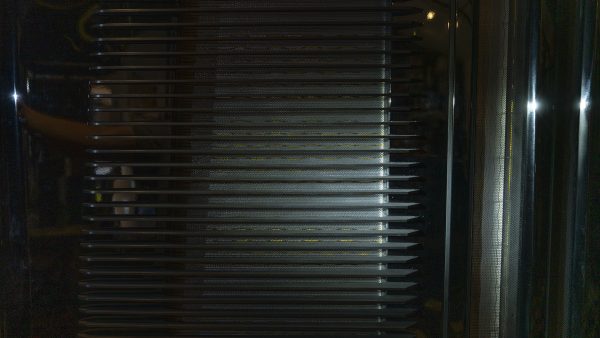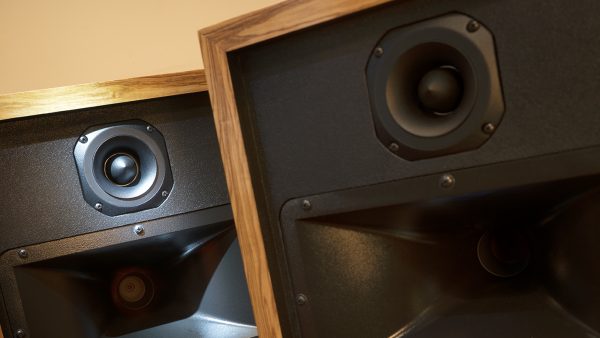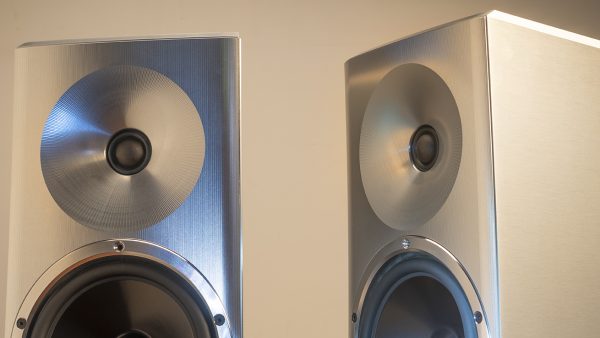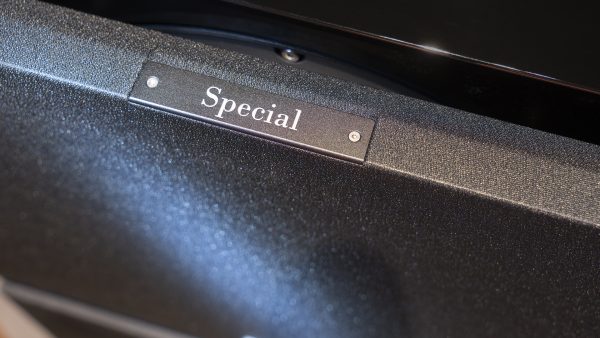Episode 2 is here!
Karl-Heinz Fink makes it a point to mention about the new Borg Episode II, “that once you experience it’s 10.25-inch woofer, other two-way speakers will sound anemic.” I couldn’t agree with him more. Living with a pair of Fink Team Kim speakers for two years now has been a fantastic experience, so I was anxious to sample the larger, floorstanding model. It took a little longer than expected, only because Mr. Fink had a new, updated “Episode 2” on the way. To be fair, the reason my Kims don’t sound “anemic” in comparison is that they get a little help from a six pack of REL S/510 subwoofers.
Truth be told, the Kims, even without subs, hardly sound anemic, but that bigger woofer is compelling! Going back to the original ESS AMT-1b speakers, which were the first implementation of Dr. Heil’s AMT tweeter, (and a 12” woofer) confirms this. Those old ESS speakers are nothing like the Borgs, but you can hear the concept go through time. Just as those were incredible rock & roll speakers, (albeit with a hole in the upper mids that the Borgs do not have) the Borgs are amazing. There’s always something incredibly special about a well designed two way speaker. Chalk it up in part to simplicity, the other to brilliant execution.
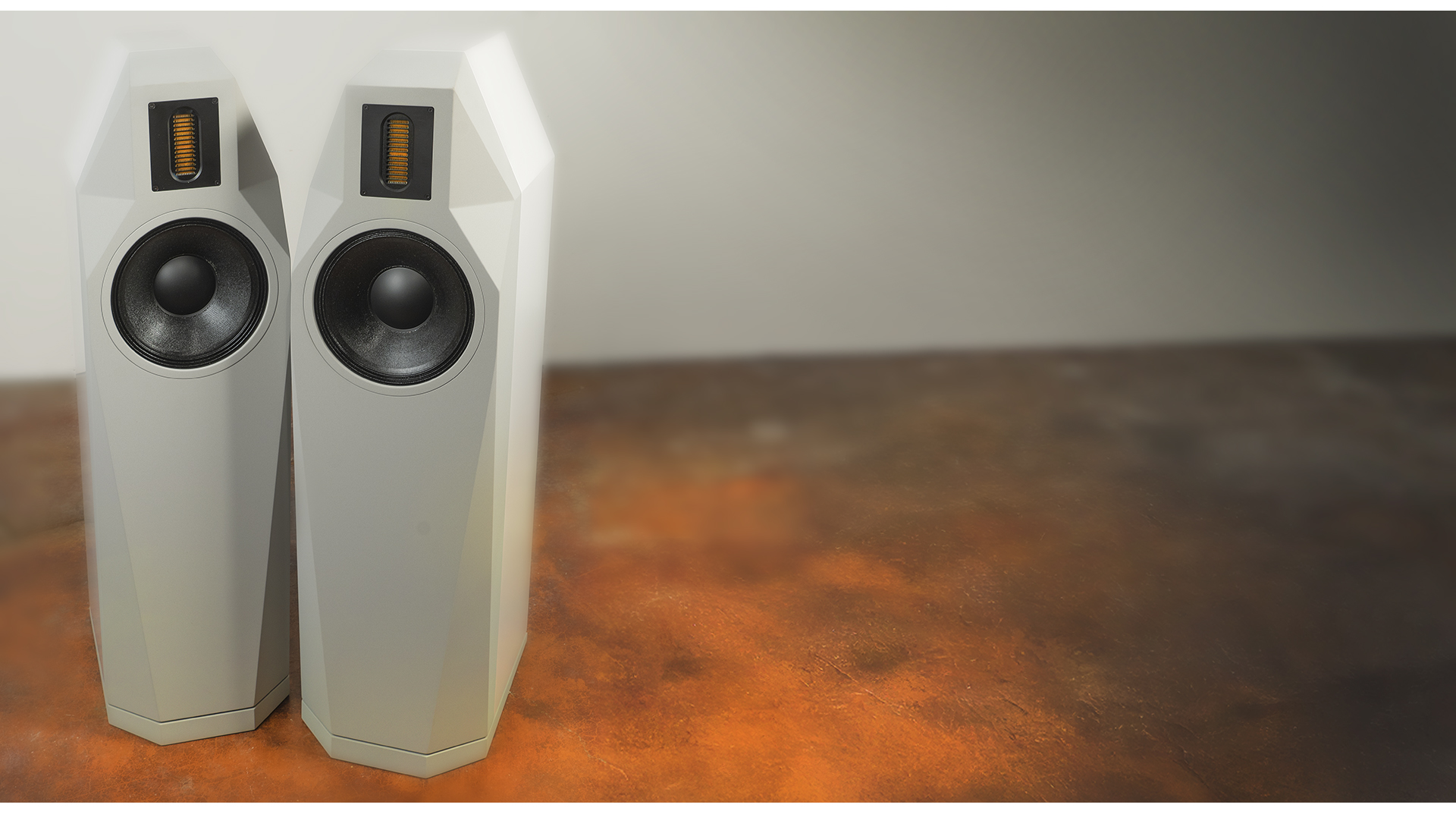
Fun as the ESS AMTs are, they are almost 50 years old and materials technology has improved considerably. Even the five years between the first and current generation of the Borg brings major improvements, though they look the same. The AMT tweeter is refined slightly, but biggest changes in the Episode 2 are in the crossover network. The most novel aspect of this network is the use of an autoformer to adjust high frequency level instead of resistors. Fink mentions that this approach used to be used in vintage BBC, Tannoy, and JBL monitors.
The end result is by far the smoothest sounding ribbon (if I can call the AMT a ribbon) tweeter, and most seamless integration of said tweeter in anything I’ve heard in 40 years. While the Borgs certainly have way more dynamic ability than either my Quad or Acoustat full range ESLs, the level of coherence they deliver is incredibly close to a full range ESL.

For all the measurement geeks out there, Mr. Fink makes it a point to say when talking about his new crossover, “A lot of components have been auditioned to find the best combination for the sound character we wanted to create. THOSE COMPONENTS ARE NOT POSSIBLE TO BE FOUND BY MEASUREMENTS – ONLY OUR EAR CAN HELP TO SELECT THE RIGHT ONE.” As the great hip hop legend ICE-T said: “I’m tired of explaining this s***” And this is from a man world renowned for his engineering and measurement chops. Amen.
Setup and final adjustment
Another small but significant change in the Episode 2 is the slight backward tilt of the cabinet, much like the way the Kims are designed. In my room I still had to tilt them back a touch more, with the speakers about 10 feet apart and a slight toe-in.
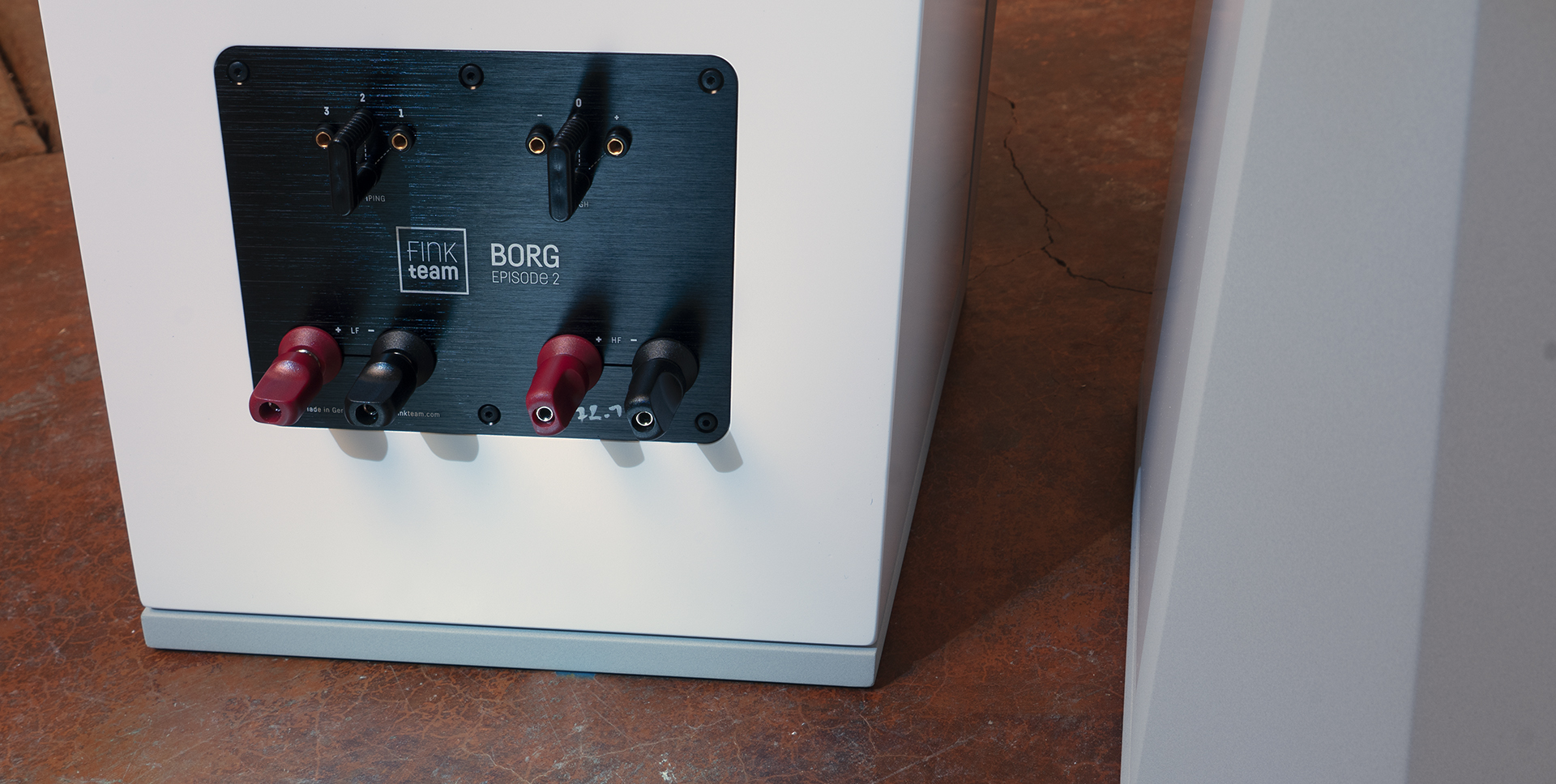
Much like the Kim, the Borg uses a three-position woofer damping control, which makes fine tuning the speaker to your amplifier a snap. It makes a major difference when using the speakers with your favorite tube amplifier, as this can often be a less than tremendous pairing, with upper bass having the tendency to bloat somewhat. I’d even suggest this is why some tube amplifiers get a bad reputation for sounding “slow.”
Auditioning the Borgs with tube amplifiers from ampsandsound, Audio Research, BAT, Conrad-Johnson, McIntosh, Octave, and PrimaLuna – suffice to say these speakers play extremely well with tube amplifiers. On the solid-state side of the fence, CH Precision, Nagra, Pass Labs, PS Audio and T+A, as well as vintage Nakamichi power amplifiers all took their turn driving the Borgs. Again – fantastic results, which leads us to the other control on the back of the Borg: the HF control. At modest volumes, I was even able to use a 300B SET amplifier, thanks to the 10-ohm impedance.
The middle setting is natural, with the Plus setting pushing the presentation slightly forward, and the Minus setting slightly more relaxed. Not only will this help you fine tune to your power amplifiers, sonic characteristic, it will add some assistance should you have an overly large, small, reflective, or dead acoustic in your room. As my room is 24 x 36 feet, I preferred the Plus setting with nearly every amplifier tried.
Digging in
When Chris stopped by to give the Borgs a listen (he is also a fan of the Kims) he keyed in immediately on their resolution and incredible smoothness. This is something that few speakers at any price can accomplish. After about an hour listening to Andrew Bird, and other tracks in this vein, his comment was “I’m just not sure these speakers could really play rock music at the levels I like to listen to.”
AC/DC’s “For Those About to Rock” was immediately cued up and cranked up, loud, connected to the Pass Labs XA60.8 monoblocks also in for review. Suffice to say the Borgs can play loud, quiet, and everywhere in between with equal dexterity.
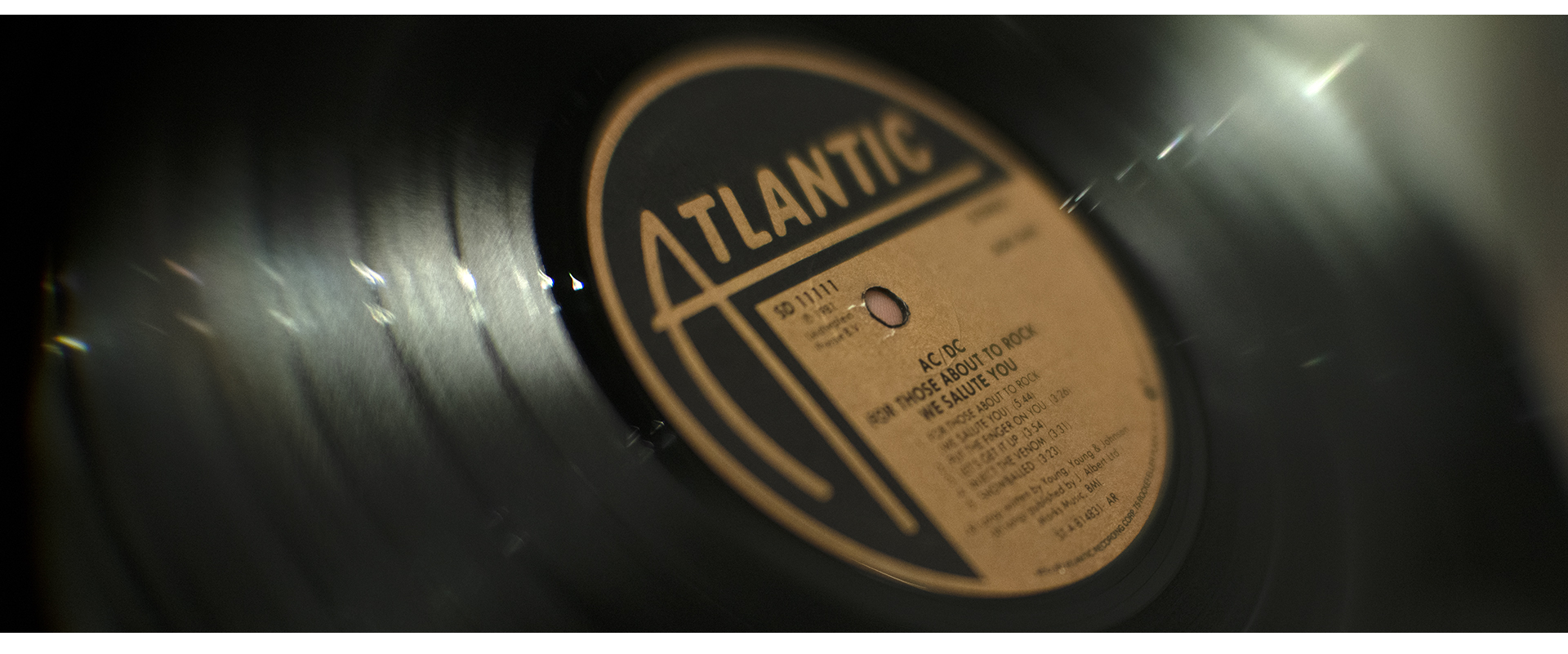
Again, precious few speakers have this range of capability. The following day, just to satisfy my curiosity, the Pass XA200.8s were placed back into operation and I was able to push the Borgs even further when my copy of Mobile Fidelity’s Van Halen One-Step arrived. I haven’t listened to rock music that loud in a very long time. Impressive.
I have no experience with the original Borg, so I cannot properly comment on the delta of what’s been improved, but Mr. Fink says the big differences in the new, improved model are in the crossover design, some slight modifications to the AMT tweeter and how the drivers mount to the cabinet.
That cool shape
The multiple angles cut on the Borg cabinet are not just for aesthetic purposes, it is to minimize internal cabinet reflections. But there is a lot more going on that you can’t see. Having collaborated on several other speakers with his technical expertise (including the Peak Consult Sinfonias also in here for extended listening) Fink and his team have taken cabinet design even further here.
Carefully optimizing the materials used in the layers of MDF, and the stuff sandwiched between the layers combines to create an enclosure for the drivers, that delivers a low mechanical signal to noise ratio. Remember, volume isn’t merely maximum sound pressure, it’s the delta between maximum quiet and maximum volume. But it’s much more difficult to make things quieter than it is to just make them louder – that’s a big part of the brilliance that is the Borg.
Great as the Kims are at their respective price point ($11,995/pair) the amount of refinement afforded by a larger, more expensive speakers are apparent when playing tracks side by side. Comparing them to some MartinLogan speakers using a lower quality AMT type tweeter it’s easy to hear the level of musicality that the Borgs bring.
More listening
Changing the program from heavy rock to softer, more acoustic and atmospheric tracks reveals the fruit of the Fink Team’s effort. Rather than list endless tracks you might not have heard, suffice to say the way cymbals, acoustic instruments decay into nothingness is exciting and refreshing. However, thanks to a word up from Brian at Whetstone Audio, in Austin, Texas – spinning Eddie Harris’ 1973 Excursions reveals the first track “Drunk Man” is reminiscent of Tom Waits at his gravelliest.
When the disc goes back to strictly instrumental work, his rapid fire playing on “Fragmentary Apparitions” clearly illustrates how fast the Borgs can start and stop reproducing musical fundamentals and overtones with natural decay, yet no overhang, or slowness whatsoever. While the Brits feel like they invented the concept of “pace and timing,” the Borgs excel at this aspect of musical reproduction. Again, this is where the ultra low noise concept of the cabinet really shows itself, the delineation of the quietest notes is incredibly smooth.
 In case you don’t have this disc (but you can stream it on Qobuz to get a good feel) Tom Waits’ Mule Variations will do just as well. Myriad layers of percussion and tinkly bits layered on top and behind the main groove reveals how well the Borgs can extract every bit of detail from a complex recording without ever sounding harsh or strained. To more clearly illustrate what I’m talking about, listen to your favorite pair of speakers on any acoustic passage, regardless of instrument, and pay careful attention to how cymbals decay into nothingness, or the way the strings on an acoustic bass fade after being plucked. The additional liveliness that the Borgs contribute to the sonic landscape is what helps bring you closer to the real thing. Isn’t that what it’s all about?
In case you don’t have this disc (but you can stream it on Qobuz to get a good feel) Tom Waits’ Mule Variations will do just as well. Myriad layers of percussion and tinkly bits layered on top and behind the main groove reveals how well the Borgs can extract every bit of detail from a complex recording without ever sounding harsh or strained. To more clearly illustrate what I’m talking about, listen to your favorite pair of speakers on any acoustic passage, regardless of instrument, and pay careful attention to how cymbals decay into nothingness, or the way the strings on an acoustic bass fade after being plucked. The additional liveliness that the Borgs contribute to the sonic landscape is what helps bring you closer to the real thing. Isn’t that what it’s all about?
Fink claims that the end of the LF response is between 35 and 41Hz, yet in my room test tones reveal solid bass down to 30Hz, but drop off quickly after that. There is no lack of drive playing Techno/Electronica tracks, Hip-Hop, or the heaviest of rock tracks. Going all the way back to Dark Side of the Moon, and that pulsing heartbeat at the beginning proves powerful and engaging. Even if you hate this classic, listen to the clocks in “Time” and see how many individual alarms you can pick out. Also, observe at how uncompressed this plays back.
Taking all the analysis out of the equation, the Borgs sound natural and inviting at all volume levels, and even at low, conversational level, you can listen to them all day without pause. Where some speakers will provide an engaging, quick demo at high volume, the Borgs put you at ease and allow you to just dissolve into the music.
Go Big
Granted, the difference between a pair of $12,000 speakers and a pair of $36,000 speakers is a lot of money. It always sounds smug when a reviewer makes it sound like the extra expense is no big deal. If your budget allows you to spend three times what a pair of Kims cost (and you have the system to support them) I do feel you will not be disappointed. If not, grab a pair of Kims and bide your time. Both are fantastic. I’ve enjoyed mine for three years now, and wasn’t jumpy until I heard the Borgs.
The hard work spent on taking the Borg to the next level reminds me of developing a Formula 1 car from the beginning to end of the season. Constant fine tuning, with attention paid to every aspect of the initial design ends up producing so much more performance as time goes by.
At the end of this review I must agree with Mr. Fink wholeheartedly, that this speaker will indeed be “difficult to forget.” If I were to make a list of my top ten favorites of all time, the Borgs would be at the top of this list. I truly hope my utter enthusiasm for these speakers will encourage you to take a listen and see if you like them as much as I do.
Finally, you’ll notice that there were no Star Trek puns in this review. Not a single one. However, you have to assume that a man calling his speakers Borgs, and saying “resistance is futile” is a fan of this futuristic series. So I had to ask Mr. Fink who his favorite captain was.
“Picard.”
So beam yourself over to a FINK Team dealer and give these a listen.
https://www.finkteam.com/products/borg/
Please note: When we reviewed the Borg Episode 2 last year, the MSRP was $36,900/pair. Due to current world tariff policies, this will probably be a higher number by the time you get to a FinkTeam dealer – check beforehand. However, even should the Borgs have a price increase, we are still very comfortable suggesting them as an excellent product and worth the (new) price asked.

